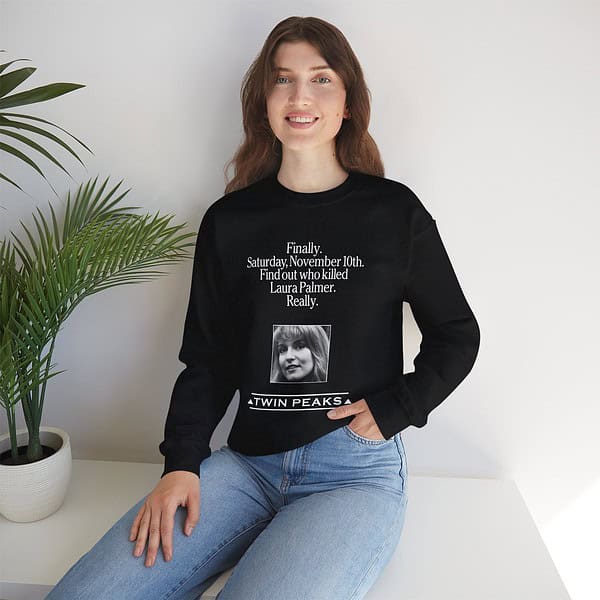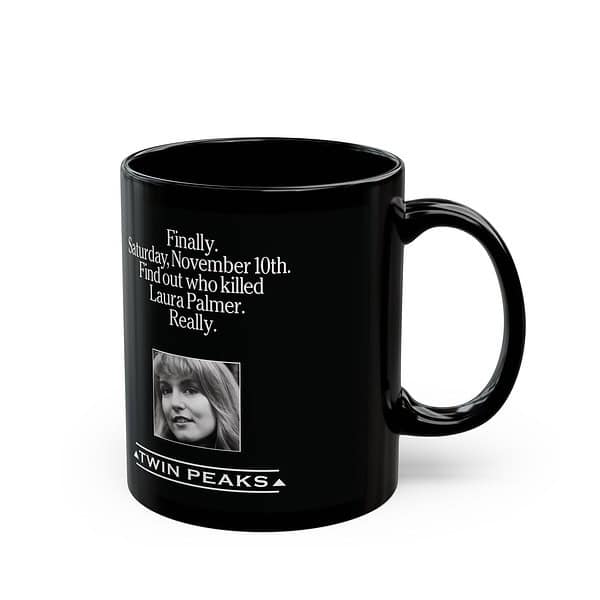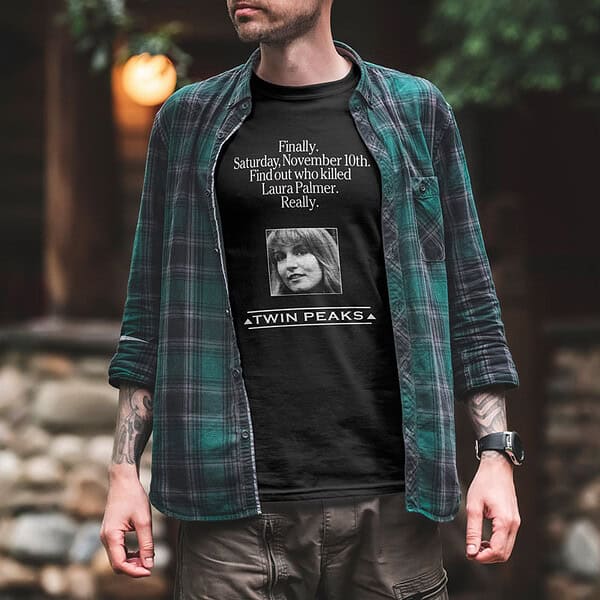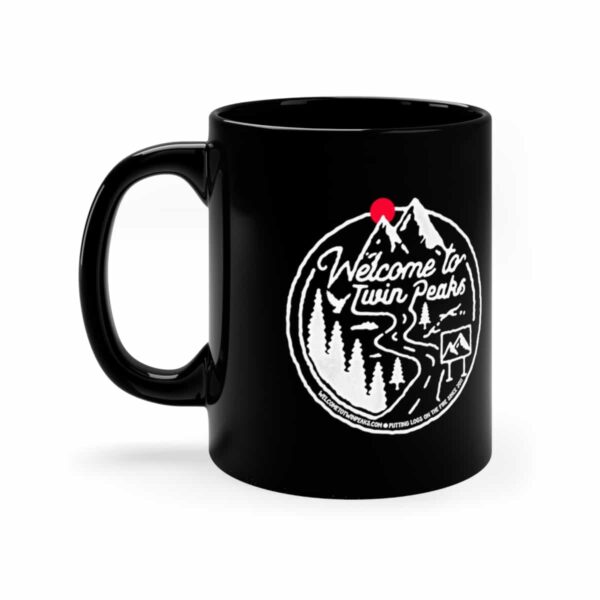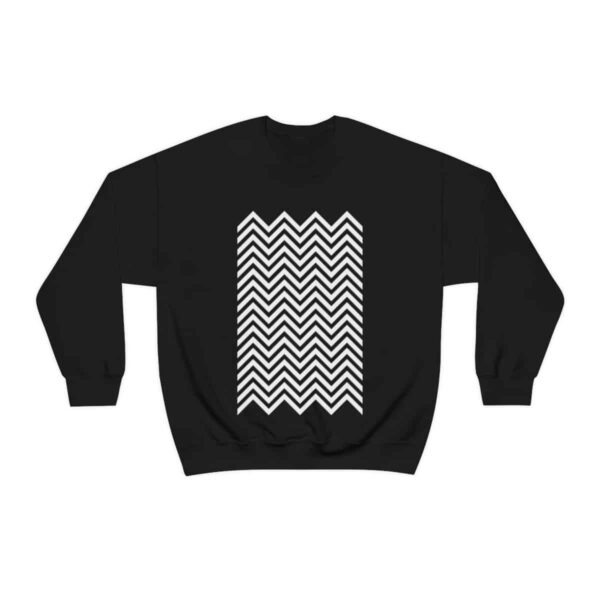Around the dinner table, the conversation was lively. Thank you but for now, the forum has been archived.
Hi ya'll! Been a minute since I posted here but on a break at work and have a few minutes to kill. . .
Anyway, have three random observations that I've not seen anyone discuss here (or anywhere else) but I think, possibly, the most important of these is the use of black and white in TP.
Typically, it appears that black and white are used for scenes that are in the past. The main point of reference here is Episode 8 - everything we see that takes place in the past is shown in black and white. This is also echoed in episode 17, when Coop travels back in time. Importantly, the scenes stay in black and white until (if I remember correctly), Laura takes his hand, at which point it shifts into color.
I think this has something to do with Coop's comments about the past dictating the future. When Laura makes the choice to take his hand, this signifies a break from the events of the past, creating a new future. Color enters the picture (pun warning) and the past become a mutable present.
I don't know if this is correct, but is suggests some interesting things about other places we see black and white. Primarily, in the Fireman's domain. While the sea outside is that mauve color, inside his mansion everything is black and white. We DO see color here though - specifically, the apparatus that injects the Laura orb (and, later, Mr. C.) into the film he is watching (as well as the creation of the orb). I'm not sure what this means. Does this mean that the Fireman exists always "in the past" and so ultimately dictates the future? Does the introduction of the orb/golden apparatus symbolize the introduction of a mechanism that will change the future? I don't really know, just throwing it out there.
Other places I remember seeing black and white include the Cooper face superimposed on the Sheriff's Office. Does that mean the superimposed Coop is a version of himself who is both in the "past" but also witnessing a present moment? It's confusing. Finally, I believe that Cole's Monica Belluci (sp?) dream is also in black and white. Anyone spot any others? Does Jefferies' location also appear in B&W?
The other things I've seen nobody note:
- When Mr. C. goes to Buella's to pick up Ray and Daria he asks if she has "Ray and Daria back there" (paraphrasing). When they exit, they each hand a notecard to one of the people in wheelchairs. It ... feels like what's happening is they are being "checked out" - like, the way one would check out a book from the library.
- Sometimes Coop is wearing a pin, sometimes he isn't. What's up with that? (jk, I had a third one and I couldn't effing remember and work break's over!)
Cheers ya'll
Did it go to color when he took her hand or when she disappeared? I don't remember now....
I'm pretty sure it changed to color when she took his hand.
K - just checked. It's when she takes his hand. Interestingly, preceded by a cut to her body disappearing on the shore: https://www.youtube.com/watch?v=Tld2PW4TQFE
Very interesting indeed........................
About the pen thing, someone on YouTube pointed out that Cooper doesn't have his pin from the moment he travels through the electric circuit and switches places with Dougie. The pen isn't seen again until he has traveled through the Great Northern entrance (I think). Some interpret this to mean that Cooper never left the Black Lodge. I don't know, but make of it what you will.
Yeah, twas a bit of a joke (b/c it's something I know has been discussed before) but definitely worth considering what it "means." He loses the pin going through the light socket and, in that weird transition into the basement of the Great Northern (where he, Gordon, and Diane walk out of the darkness), it re-appears. This is before he walks through the door. Very, very strange.
One thing to consider (this is not new, been pointed out but still interesting): He does not have the pin on in the first scene of the series, where he is sitting with the Fireman. Which begs the question: when does this scene occur in the chronology of the series (if at all)?
Some people have theorized it occurs somewhere between when we see him in the Sheriff's station and the transition to the basement of the Great Northern. A more fatalistic (if not downright depressing) idea is that we're viewing a version of Coop in a timeline that is being erased (b/c the effect used for his disappearance is similar to that used when Laura's body disappears on the shore). I.e., by changing the timeline, whatever Coop is sitting there and says "I understand" is erased in a similar fashion. Would note (tying back to the topic here) that that scene is also in black and white.
Cole tells us (in I think ep 16 or was it 17?) That he was told by Coop (at some stage....when?) That he was trying to kill two birds with one stone. And also to do everything they could to find him if he went missing .
Now Coop tells Cole this because Fireman has told Coop.
When?
Cole tells us (in I think ep 16 or was it 17?) That he was told by Coop (at some stage....when?) That he was trying to kill two birds with one stone. And also to do everything they could to find him if he went missing .
Now Coop tells Cole this because Fireman has told Coop.
When?
Welllll. . . it kind of depends on how you take that first scene, and where you think it occurs within the narrative, yeah? Does the Fireman's call to "remember" these things mean that Coop needs to, prospectively, remember these things when he encounters them? Or does it mean that Coop has already experienced these things and needs to remember them?
After watching the series, I started to think a lot about Lost Highway (also, Mulholland Drive), particularly after Jeffries shows Coop what looks like a mobius strip in part 17. In LH in particular, the beginning is also sort of the ending (or, at least, is crossing over with the ending to make a loop). Is it future, or is it past? or is it both? There is a lot of beauty in the ambiguity.
Anyway, here's one interpretation: The Coop we see in the first scene of the series has undergone everything we have seen thusfar by the end of the series. He has gone through multiple loops on the mobius strip, including both things we've seen, and things we haven't (one of these potentially being a loop that involved him telling Gordon about "two birds"). Likely, he has started to fracture, like Jeffries, and needs some help remembering, because of the multiple timelines/realities he has jumped through.
So, the giant reminds him of "430" "two birds with one stone" and "Richard and Linda." When we see Coop in the hotel reading the note from Linda (Diane) he seems utterly unfamiliar with the names Richard and Linda. Now that he's gone through that experience, those names mean something, as do 430 and the two birds comment. This is why he says "I understand." He's received the information he needs to remember critical items, and can move forward from that, into whatever needs to happen next in this iteration of the cycle. Looking at things that way, the first scene of the series is actually the last scene.
Cole tells us (in I think ep 16 or was it 17?) That he was told by Coop (at some stage....when?) That he was trying to kill two birds with one stone. And also to do everything they could to find him if he went missing .
Now Coop tells Cole this because Fireman has told Coop.
When?
Welllll. . . it kind of depends on how you take that first scene, and where you think it occurs within the narrative, yeah? Does the Fireman's call to "remember" these things mean that Coop needs to, prospectively, remember these things when he encounters them? Or does it mean that Coop has already experienced these things and needs to remember them?
After watching the series, I started to think a lot about Lost Highway (also, Mulholland Drive), particularly after Jeffries shows Coop what looks like a mobius strip in part 17. In LH in particular, the beginning is also sort of the ending (or, at least, is crossing over with the ending to make a loop). Is it future, or is it past? or is it both? There is a lot of beauty in the ambiguity.
Anyway, here's one interpretation: The Coop we see in the first scene of the series has undergone everything we have seen thusfar by the end of the series. He has gone through multiple loops on the mobius strip, including both things we've seen, and things we haven't (one of these potentially being a loop that involved him telling Gordon about "two birds"). Likely, he has started to fracture, like Jeffries, and needs some help remembering, because of the multiple timelines/realities he has jumped through.
So, the giant reminds him of "430" "two birds with one stone" and "Richard and Linda." When we see Coop in the hotel reading the note from Linda (Diane) he seems utterly unfamiliar with the names Richard and Linda. Now that he's gone through that experience, those names mean something, as do 430 and the two birds comment. This is why he says "I understand." He's received the information he needs to remember critical items, and can move forward from that, into whatever needs to happen next in this iteration of the cycle. Looking at things that way, the first scene of the series is actually the last scene.
Yep, i agree and understand that ☺
That's why I'm asking when did Coop and Cole have this conversation?
It's after the fireman talk but before ep 17/18
^_^ Apologies, I tend to get a bit verbose sometimes.
It's SO WEIRD. Cole says that this conversation took place back before Coop disappeared 25 years back. He also indicates partly this involved Major Briggs and that they (Briggs + Coop) hatched this plan to find Judy. But, like, unless this happened off screen somewhere in S2, I'm flummoxed. I mean, if I remember correctly (ha) Briggs was all tripped out on haliparadol the last time we saw him is S2 so. . .
One thing this makes me think is either a)Coop traveled back in time and made a call to Gordon in some timeline (I mean, if Gordon never saw him, and it was just a phone call, it's possible Coop's plan with Briggs is with the disembodied head of Briggs we saw in this series or b)as a result of Coop f&#ing with the timeline, the events of S1+2 played out differently than we saw them. And young Coop really did hatch this plan we just have never seen the "unofficial" version of those events. . .
It's all about that unofficial version IMHO. It's exactly what I was thinking of before I got to the end of your post where you mentioned it.
Hey Micah, great observations. I think you've nailed it with the black and white representing the original timeline (now the 'unofficial version') and color representing a transition to the new reality Richard Coop & Carrie Page are trapped in.
I haven't been on the board for awhile, so pardon me if I make observations which are being discussed elsewhere.
Watching parts 17 & 18 again, the whole thing finally "made sense" to me in the circular / non-linear way that "Lost Highway" does. Some thoughts:
1. Once Bad Coop is defeated, we see the superimposed face of RICHARD Cooper on screen, as if he is un-moored from time and watching this specific reality from outside himself. (See further below for explanation.)
2. Good Dale Coop goes to the Great Northern and transitions to the Mauve Zone with The One Armed Man. When Jeffries is talking to Good Coop it isn't entirely clear that he knows that it's a different Coop from when Bad Coop was there. Like other lodge entities, Jeffries has trouble distinguishing past/future and also different versions / realities from one another. "Did you ask me this?" etc.
3. Good Coop ends up in the forest in 1989 and takes Laura's hand. The screen goes from B&W to color as the new timeline is created. Laura disappears from the shore. He says he's taking her "home" as they head for Jack Rabbit's Place / portal to White Lodge. Perhaps he meant to protect her in the White Lodge.
4. A new Dougie is created immediately after. Ironically when Dougie gets to Janey-E's he only says "Home" echoing Dale in the woods.
5. Judy, residing in Sarah Palmer, is SUPER PISSED. She's moaning away and she stabs the Laura photo in frustration at the timeline change. Time is fluid at this point because the stabbing jerks forward and backward.
6. The stabbing of the photo either causes or is followed by Judy ripping Laura from Coop's hand, sending her off to Odessa as Carrie Page. The scream we hear is Laura simultaneously being ripped from the Lodge. The episode ends.
7. At the beginning of Part 18 Bad Coop is burning in the chair.
The incineration of Bad Coop is significant b/c if he had still been allowed to exist in the Black Lodge after his 25 years on Earth then Good Coop would still have a shadow self "balancing" him off.
But with his doppelganger destroyed his opposite nature has now been fused with the original Dale, becoming Richard Cooper at this moment. We just can't tell at first. (But even in the car ride later with Diane to the 430 marker he is less buoyant.)
8. Events have been altered, so Laura's Lodge chair is empty. She was never there.
9. One Armed Man takes Richard Coop to The Arm, echoing the first episodes, but their conversation is different. Now it's about the Little Girl Down the Lane, who is Laura, lost in Carrie Page's world. The conversation is no longer about the Doppelganger b/c he never went to Earth at all.
10. But Richard Coop in the Lodge has a flashback to his life as Dale. He remembers that Laura was once in the Lodge and whispered in his ear. What she tells him is essentially, "You are responsible for the new terrible life I am about to experience in Odessa." This makes Coop tremble.
11. As Richard Cooper is both Dale Cooper & Mr. C that is why he can leave the Lodge by manipulating the curtains. He has aspects of both personalities and abilities. He doesn't even realize it yet.
12. When he meets Diane outside the Lodge it echoes their scene in the Sheriff's station, but is MUCH MORE AWKWARD. They again ask each other, "Is it really you?" but even though they each say yes, it is with great uncertainty. And not much joy, unlike the very joyous reunion at the Sheriff's station. They don't even kiss. It's b/c they have already both been changed.
13. Once Diane/Linda and Coop/Richard cross over they're even further away from remembering who they were. The awful sex scene is especially painful for Diane b/c she is making love to both good and bad Coop in one being. The man she loved and the man who raped and destroyed her. It's unbearable. She literally does not recognize him. She leaves before morning.
14. Richard Coop awakes and carries on with his mission, but he is a confused jumble. At Judy's Diner he evidences aspects of both Dale & Mr. C. He helps the waitress but he is also cruel. He shoots the cowboy in the foot. He ends up threatening the diner staff by putting the guns in the boiler. He's f**ked up.
15. Richard Coop finds Carrie page. Good Coop would never have left there without asking about the dead guy in the living room. It's another sign that Coop is a jumbled mess.
(Speaking of the dead guy with a bullet in his head, he has a bit of a "BOB" look to him, plus it almost looks like a Bob-style orb was coming out of him. It could even have been Bob in a different body since the timeline is altered. The tormentors chase Carrie/Laura through various realities.)
16. They arrive at the former Palmer house. We know Judy is behind the change because of the Chalfont/Tremond (sp) connection. When he asks "What year is this?" he may be asking the wrong question. The question might be "What alternate reality is this?" But either way, like Jeffries, he's become un-moored from the original world of Twin Peaks.
17. There's even the possible implication that the version of Coop we see with the Fireman in episode one is Good Coop receiving instructions that he'll need once he's Richard Coop. To remember who he originally was and what his mission was.
WHEW!!
WOW! I am almost entirely on board. There are a few things I don't agree with or understand, but I'm going to give it some time to sink it.
Thanks for posting and welcome back!
Thanks Brandy! I know it can be improved / refined, but Micah's idea about the B&W scenes as 'past' felt like a light switch flipping.
